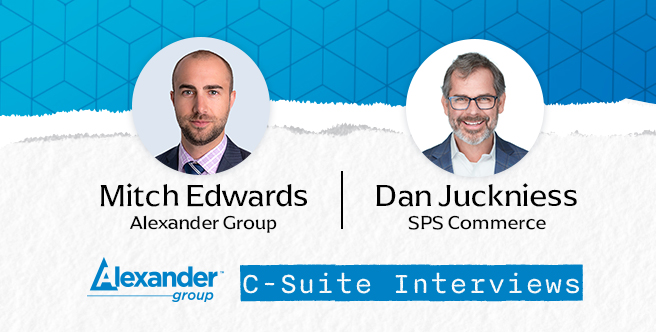John Stamos: Hello, my name is John Stamos. I am a principal in the Alexander Group’s tech practice. I’m joined by Ian Schubert, a director in the tech practice as well. And we’re here to talk about the hunter-farmer construct, as organizations in the tech industry are thinking about their coverage models. Before we dive into the details, just to level set, when we talk about a hunter-farmer model as we think about the land adopt, expand, renew customer engagement model, there’s a prevalent coverage around single account ownership, meaning your core seller, often termed an account executive, is supporting landing new logos or is chartered with landing new logos. But they may maintain some sort of relationship with that account to drive expansion.
And so you’ll see at the bottom of this concept slide. There’s the single account ownership that’s really demonstrated pretty well. oftentimes there’s a customer success manager or renewal rep that’s supporting it, supporting that individual but it’s pretty clean. Now you’ve got some cooperative account ownership and some team ownership models. We won’t get into the details there, but there’s a maintaining engagement among, AEs through the sales motion or having some accountability towards driving growth. When we talk about the hunter-farmer model, we’re really talking about the bifurcated account ownership that you see on the on the right of the screen. so that’s where you have an account executive. They hand off to another seller, the account manager, to grow that.
And as you’ll see, based on our data, the prevalent coverage is really that single account ownership. But as I mentioned, more and more organizations are driving towards the bifurcated account ownership that you see on the right. And by the way, as you as you’ll notice, there’s different sorts of flavors and forms that go into this. All of these are considerations as you think about making the jump. So the question is what’s the rationale? Why are organizations thinking about the bifurcated account ownership. Oftentimes there’s a couple of reasons. Oftentimes it’s to ensure we’ve got appropriate focus on driving new logos. Oftentimes this lacks attention when the expansion and renewal engine of the sales organization is working and working well. there could be a struggle to bring in new logos, particularly with later stage companies. and this is generally a big opportunity to accelerate growth and continue to realize the multiples in terms of the market valuation. Conversely, organizations could have strong new logo performance, but there may be a churn issue and so you need to have increased focus on churn mitigation and driving NRR or net revenue retention. so again, there’s room for balance performance on both sides. But it’s really to ensure that you’ve got the privilege of focus.
So I’ll ask Ian I’d love to get your perspective. You’ve helped a lot of organizations make this journey. If I think about the role objectives, the Hunter is fairly clear. but as you introduce a new role, there’s going to be impacts to all the other roles that support the commercial model. how are those roles impacted? What are they and how are they impacted?
Ian Schubert: Absolutely. And I know you and I worked together on a client facing this transition, wanting to take on this transition this fall. And I’ve certainly seen, several others having this conversation this past fall as well. So I think walking through one, one recent example kind of calls out some of those important points. so in the case of the client we were working on together, creating a new logo role was pretty straightforward for them. They wanted to increase that focus on bringing on brand new customers.
As they began to pull the thread on that and think about the downstream roles, a bunch of additional considerations emerged. So as they as they split off the folks on existing accounts into an account manager role that was fully focused on those existing customers, they were able to reallocate renewals, accountability to the account manager and eliminate a bespoke renewals role that they had. And with the account manager driving renewals that fed into their overall customer management strategy, the ingrainment of account managers and renewals presented them with the opportunity to find expansion potential in those accounts, both on renewal cycle and off it.
And then further downstream from a customer success manager perspective, the client was able to lessen the commercial focus of the customer success manager and create a bright line between not only new logos and existing sales, but also a laser focus on adoption and customer value realization. And was able to sort of position the customer success manager in that trusted advisor status, given that they had a sort of separation from commercial responsibilities for renewal or expansion. and despite distinct focus areas for the CSM and the account manager, there are a lot of areas that those account team roles needed to coordinate on account plans, business reviews, etc.. but I suppose that gets us a bit into operationalization.
John Stamos: Rules of engagement. What are the critical collaboration or hand-off points that come under stress in that hunter farmer model?
Ian Schubert: Yeah. So the first thing that that comes to mind for many of my clients is account handover. So, how long does the hunter hold on or the account executive hold on to a brand new logo before passing it on to the account manager or the account team? So the clients I’ve worked with in the tech industry are typically considering their normal sales cycle in combination with, the propensity of a new logo to buy and then immediately expand. So in cases where the sales cycle is longer, you know, over a year long, sort of time frame or longer or where customers, that, that sign on as a new logo, want to see the product prove out before they buy anything else. that generally pushes our clients towards, doing a more immediate handoff so that the account manager and the CSM can ensure a successful adoption and really set themselves up to tee up future expansion.
John Stamos: So I’d love to get into the sales compensation considerations. I’m sure there are big considerations that you have to think through whether you’ve got a hunter and a farmer. What are some of the dynamics there?
Ian Schubert: Absolutely. As always, once you’ve decided how you want your sales roles to behave, you’ve got to then align your compensation program to that. so the hunter side, the account executive, those are when they’re focused purely on new logos. That’s generally a higher risk, sort of proposition with, cyclicality and a boom bust dynamic. So hunters will generally have a higher upside earning potential multiple on their target incentive if they overachieve goal. There are also generally paid from dollar one.
On the other hand, the farmer, may have separate expansion and renewals measures may have an all in measure. And if there’s a baseline expectation for growth, kind of amount of an all in measure that’s expected via renewals or an amount of expansion that that the company expects to come in pretty easily as a baseline. Those can be reinforced by not paying on the pay curve from dollar one, and instead having a reduced rate of pay up until the point of that kind of baseline growth expectation for the farmer.
John Stamos: Curious, the other thing that I know I mentioned was around talent. Can you briefly comment on the dynamics of what you see, for the Hunter role and, what you need in that, in that function?
Ian Schubert: You know, calling someone a hunter doesn’t make them a hunter. So, there’s a couple of things I see clients doing about that. and talent is definitely going to play into the success of trying to take on a hunter and farmer model. So upskilling programs are one main area sales playbooks. If you feel like you have the right personalities putting some of those motions on paper, documenting some of the messaging, laying out how the ideal prospecting workflow looks, how much time should be spent cold calling―all of those sorts of things will help a sales rep that does have the right personality but maybe doesn’t have the right experience yet gain that experience and rapidly ramp up to their new role, whether that’s the hunter or the farmer. And then there are going to be many cases where there are mismatches in personality or a willingness to learn and change. And so, as you start slotting roles into either a hunter or a farmer, that’s a key point to pay attention to, is whether you believe your current talent is going to be able to rise to that challenge of the new, new objectives, or if you’re going to have to look to the market to fill some of some of those slots.
John Stamos: So we’ve talked about all of the critical success points. You know, one of the things as organizations have made the migration. There are, I’m sure, some evaluation points that you need to take a look at to see how well it’s working and potentially course correcting. what are some of the objectives and challenges for evaluating the success of that bifurcated hunter-farmer model?
Ian Schubert: Yeah. So as you noted up front, John, ultimately clients are looking to take on a hunter-farmer transition because they want to drive more, focus on new logos, more focus on expansion, and ultimately drive up the overall average sales productivity, whether that’s from new or retained bookings. And so it’s crucial as you go into a transition like this, to have a baseline understanding of how productive an average sales rep is, especially with relation to your segmentation model.
Knowing how productive a rep is in each segment. And then that’s going to be your baseline for evaluating whether your hunter farmer model transition is working. so you might expect one role, as we talked about earlier, the farmer might have a higher productivity expectation given they have an existing book of business. but when you review the hunter and farmer and the success of the model overall, you should see an overall average productivity increase between those two roles.
John Stamos: And I’m assuming that takes time because as you’re as you’re building the new function, it’s an invest. It’s typically an investment into the organization. So I’m sure there’s a little bit of a dip before you see the productivity gain. Is that fair?
Ian Schubert: Yeah, absolutely. And in addition to that you have to consider and be prepared for the kind of timing of evaluation. So if you’ve landed on a model where you’re not handing an account off for a year long period, you’re expecting that new logo rep to do fast follow expansion, and maybe sales cycles are shorter. You’re going to have to, you know, plan to evaluate your model over the next several years. so when taking on a transition like this, it’s definitely important to be clear eyed about the points in time that you’re going to be able to do a full evaluation of the success of the transition.
John Stamos: Interesting. Well, Ian, this has been, a great discussion. We talked about the rationale for for migrating to the hunter farmer model. You talked through the clear role objectives and how they change for some of the other legacy roles that you have. The importance of establishing clear rules of engagement through critical success points talked about sales compensation considerations as well as talent. So appreciate the feedback. These are certainly all aspects that any organization that’s looking to make the jump should consider. Well thank you.






